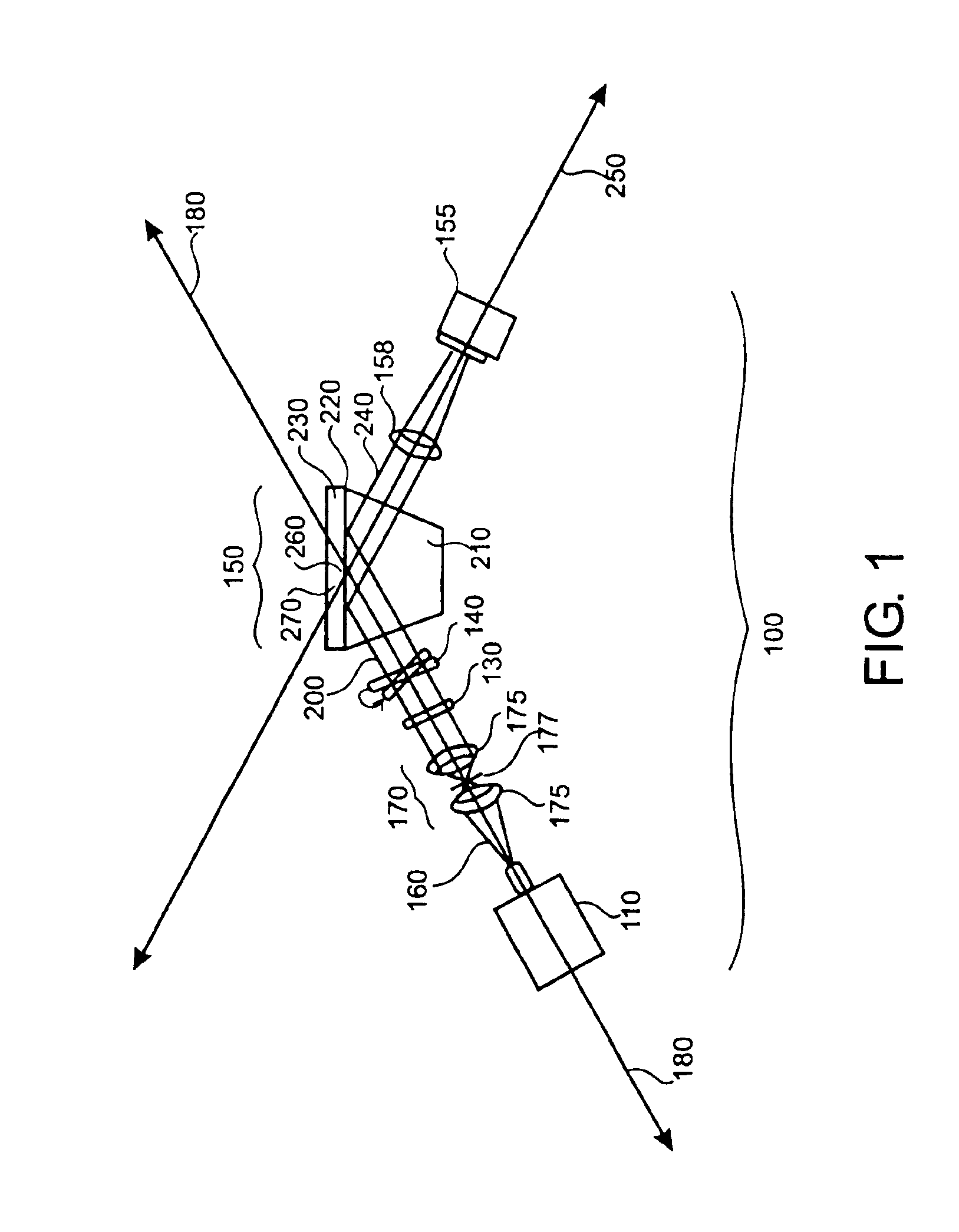Wavelength tunable surface plasmon resonance sensor
a plasmon resonance and surface plasmon technology, applied in the field ofwavelength tunable surface plasmon resonance sensor, can solve the problems of sharp attenuation of the intensity of the reflected beam, experimentally difficult to maintain a very thin and constant thickness air gap, and these optical configurations have several practical limitations. , to achieve the effect of low sample volume, high sensitivity and high time resolution
- Summary
- Abstract
- Description
- Claims
- Application Information
AI Technical Summary
Benefits of technology
Problems solved by technology
Method used
Image
Examples
example 1
Characterization of an Exemplary SPR Sensor
[0083]The ability of SPR sensors of the present invention to sense changes in the refractive index of a probe region was verified by experimental and computational studies. Specifically, it is a goal of the present invention to provide SPR sensors capable of sensitively detection and characterization changes in the refractive index of a probe region. Further, it is a goal of the present invention to SPR sensors providing a large dynamic range, which are capable of probing materials having a wide range of refractive indices.
[0084]To achieve the aforementioned goals, detection sensitivities and dynamic ranges of an exemplary SPR sensor were computationally modeled and evaluated by monitoring the refractive indices of low concentration sucrose solutions. The exemplary SPR sensor 500 employed in these studies is based on the Kretschmann configuration and is shown in FIG. 5. The polychromatic light source is a 150 W quartz halogen lamp 510 (Dola...
example 2
SPR Images of Thiol Patterns and Protein Bovine Serum Albumin on Gold Surfaces
[0092]To assess the sensitivity and spatial resolution of SPR imaging devices of the present invention, SPR images of thiol patterns were generated by an exemplary SPR sensor. Thiol patterns on a gold surface (comprising approximately 1 nm Cr and approximately 45 nm Au electron beam deposited onto standard microscope slide from Fisher Scientific) was made using a polydimethylsiloxane (PDMS) stamping protocol. The protocol employed was optimized to minimize transfer of material from the PDMS stamp to the surface and to produce one monolayer of thiol on the surface. All images were taken with p-polarized light. FIG. 12 shows a series of images taken of a thiol and water pattern with an optical interference filter positioned a several different tilt angles. FIG. 12A corresponds to a center wavelength of 857 nm, FIG. 12B corresponds to a center wavelength of 852 nm, FIG. 12C corresponds to a center wavelength ...
PUM
| Property | Measurement | Unit |
|---|---|---|
| center wavelength | aaaaa | aaaaa |
| tilt angle | aaaaa | aaaaa |
| decay length | aaaaa | aaaaa |
Abstract
Description
Claims
Application Information
 Login to View More
Login to View More - R&D
- Intellectual Property
- Life Sciences
- Materials
- Tech Scout
- Unparalleled Data Quality
- Higher Quality Content
- 60% Fewer Hallucinations
Browse by: Latest US Patents, China's latest patents, Technical Efficacy Thesaurus, Application Domain, Technology Topic, Popular Technical Reports.
© 2025 PatSnap. All rights reserved.Legal|Privacy policy|Modern Slavery Act Transparency Statement|Sitemap|About US| Contact US: help@patsnap.com



